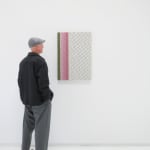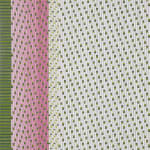









Andrea Higgins American, b. 1970
Beneath the Snow, 2022
oil on linen
30 x 21 in
76.2 x 53.3 cm
76.2 x 53.3 cm
Further images
-
(View a larger image of thumbnail 1
)

-
(View a larger image of thumbnail 2
)

-
(View a larger image of thumbnail 3
)

-
(View a larger image of thumbnail 4
)

-
(View a larger image of thumbnail 5
)

-
(View a larger image of thumbnail 6
)

-
(View a larger image of thumbnail 7
)

-
(View a larger image of thumbnail 8
)

-
(View a larger image of thumbnail 9
)

-
(View a larger image of thumbnail 10
)

Andrea Higgins believes textiles represent a fundamental aspect of the aesthetics of a culture and a choice of dress can be as evocative as the representation of a face. She...
Andrea Higgins believes textiles represent a fundamental aspect of the aesthetics of a culture and a choice of dress can be as evocative as the representation of a face. She focuses on people -- historical or from literature -- who understand the role of their apparel in creating a persona, and using their dress to exert power.
Here, Higgins explores the obsession with costuming at the Heian court of 10th century Japan. This is a representation she's imagined, based on historical research and a passage from The Tale of Murasaki by Liza Dalby, in which Murasaki Shikibu, the author of The Tale of Genji, describes her choice of attire for an evening rendezvous with the powerful Michinaga:
"I had been back at my station at the palace for but two nights when a summons came from Michinaga... It was quite late when I made my way through dark corridors to the chambers he had indicated. I... was wearing a new set of padded robes in a combination of shades of pink, green, and white called Beneath the Snow — a new year's gift from Her majesty… I could hear Michinaga moving about, and arranged the layered edges of my skirts behind the screen: first the green of my underrobe, spreading wide, then three shades of pink done so skillfully they shimmered like petals in the lamplight, and then the top two layers of white, lying lightly, like a coat of snow."
—Liza Dalby, The Tale of Murasaki (p. 286)
Here, Higgins explores the obsession with costuming at the Heian court of 10th century Japan. This is a representation she's imagined, based on historical research and a passage from The Tale of Murasaki by Liza Dalby, in which Murasaki Shikibu, the author of The Tale of Genji, describes her choice of attire for an evening rendezvous with the powerful Michinaga:
"I had been back at my station at the palace for but two nights when a summons came from Michinaga... It was quite late when I made my way through dark corridors to the chambers he had indicated. I... was wearing a new set of padded robes in a combination of shades of pink, green, and white called Beneath the Snow — a new year's gift from Her majesty… I could hear Michinaga moving about, and arranged the layered edges of my skirts behind the screen: first the green of my underrobe, spreading wide, then three shades of pink done so skillfully they shimmered like petals in the lamplight, and then the top two layers of white, lying lightly, like a coat of snow."
—Liza Dalby, The Tale of Murasaki (p. 286)
